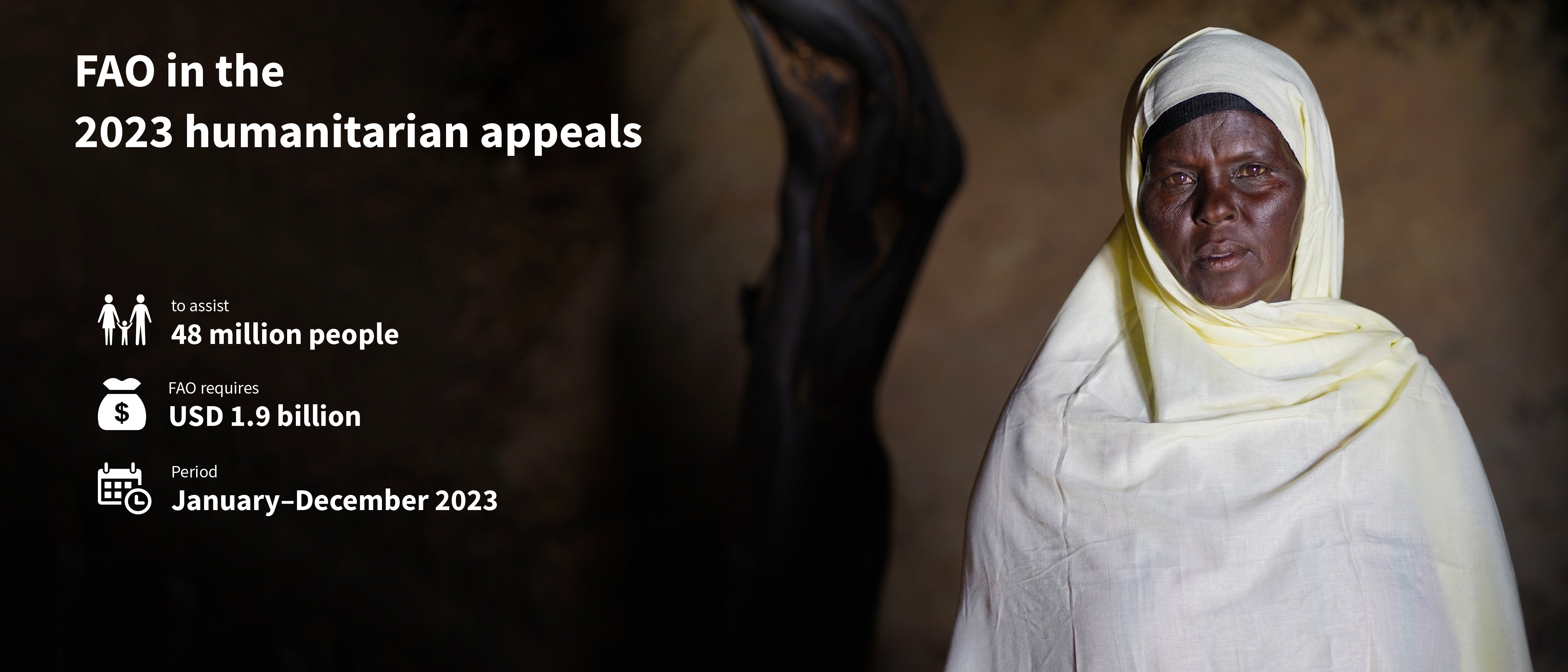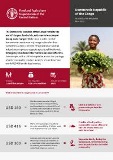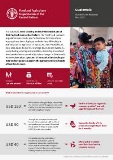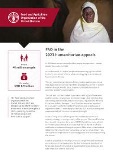
Across the world, 222 million people are experiencing high acute food insecurity, almost one in five of whom are struggling to access enough food to survive the day. They are overwhelmingly farmers, fishers, herders and foresters, whose most basic means of survival have been devastated by conflict or extreme weather (drought, floods), pests, disease or the steady disruption of economic turbulence and instability.
Agriculture aid is life-saving humanitarian aid. Urgent, time-sensitive agricultural interventions, especially when combined with cash and food assistance, have enormous impacts on food availability, nutrition and displacement, among others, significantly cutting other humanitarian costs. More importantly, such interventions are geared towards meeting the needs and priorities of affected communities – allowing them to remain in their homes where it is safe to do so, meet their own needs and lead their own future recovery.
Under the 2023 humanitarian appeals, FAO requires USD 1.9 billion to help almost 50 million people gain access to a steady supply of nutritious food, facilitate their recovery and lay the foundations for resilience to future shocks.
In depth

Colombia: 2023 Humanitarian Response Plan (HRP); 2023 Regional Refugee and Migrant Response Plan (RMRP)
05/2023
In Colombia, six out of ten conflict-affected households are food insecure and 26 percent of the population do not manage to eat three meals a day.

Democratic Republic of the Congo: Humanitarian Response Plan 2023
04/2023
The Democratic Republic of the Congo remains the world’s largest food crisis, with one in four people facing acute hunger.

Ethiopia: Humanitarian Response Plan 2023
06/2023
Ethiopia continues to face several overlapping crises, in particular conflict and record drought, which have resulted in poor crop production, limited access to markets to buy and sell produce, loss of income and high levels of malnutrition and food insecurity.

Guatemala: Humanitarian Response Plan 2023
04/2023
In Guatemala, food security and nutrition needs are at their highest in recorded history.

Haiti: Humanitarian Response Plan 2023
03/2023
Nearly half of the population in Haiti doesn’t have enough to eat, including for the first time ever 19 200 people in Catastrophe (IPC Phase 5).

